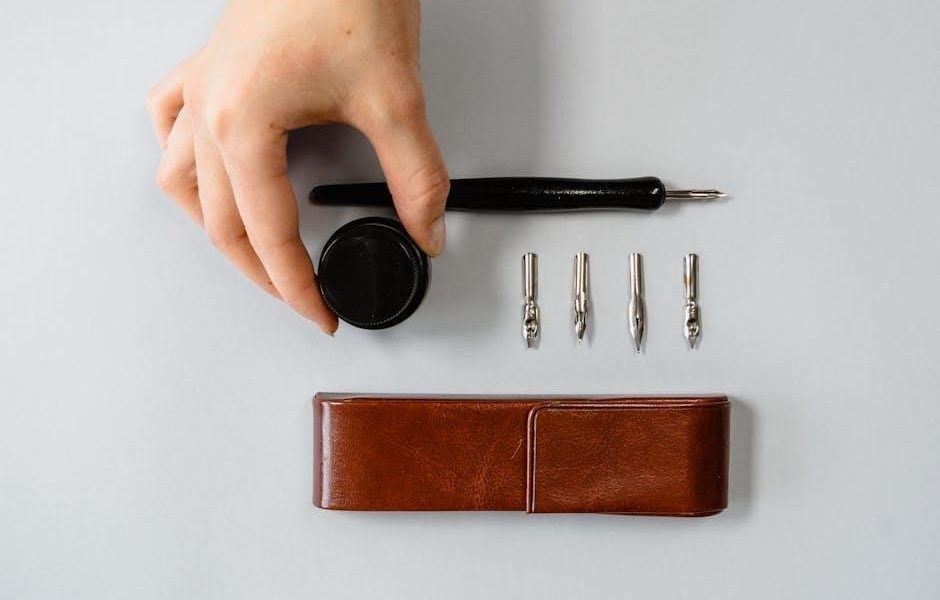
pelvic floor manual therapy
Pelvic floor manual therapy is a non-invasive, hands-on approach targeting the muscles and tissues of the pelvic floor to restore function, relieve pain, and improve overall pelvic health.
Definition and Overview

Pelvic floor manual therapy is a specialized form of physical therapy that focuses on the evaluation and treatment of the pelvic floor muscles and surrounding tissues. It involves hands-on techniques such as soft tissue massage, joint mobilization, and muscle relaxation to address dysfunction, pain, or weakness in the pelvic region. This approach aims to restore normal muscle tone, improve mobility, and enhance the overall function of the pelvic floor. Pelvic floor manual therapy is commonly used to treat conditions like pelvic pain, incontinence, and prolapse, as well as to support recovery during pregnancy, postpartum, or after surgery. It is a non-invasive and personalized treatment option that works to promote long-term pelvic health and wellbeing.
Benefits of Pelvic Floor Manual Therapy
Pelvic floor manual therapy offers numerous benefits for individuals experiencing pelvic floor dysfunction. It provides relief from chronic pelvic pain, improves bladder and bowel control, and enhances sexual function. This therapy strengthens pelvic floor muscles, improving posture and reducing the risk of prolapse. It also promotes relaxation and reduces muscle tension, which can improve overall mental and physical wellbeing. Many patients find it helpful for addressing postpartum challenges, menopause-related issues, and recovery after pelvic surgery. The non-invasive nature of this therapy makes it a safe and effective option for individuals seeking to restore pelvic health without medication or surgery. By addressing the root causes of dysfunction, pelvic floor manual therapy can lead to long-term improvements in quality of life and overall pelvic floor function.
What to Expect During a Session
A session of pelvic floor manual therapy typically begins with a thorough assessment to identify areas of tension or dysfunction. Your therapist will discuss your symptoms, medical history, and goals to tailor the treatment. The session may involve gentle, hands-on techniques such as soft tissue massage, joint mobilization, or trigger point release to relax tight muscles and improve circulation. You may also be guided through specific exercises to strengthen pelvic floor muscles and enhance coordination. The therapy is performed in a comfortable, private setting, and your active participation is encouraged to ensure a collaborative approach. The focus is on empowering you with tools and techniques to manage symptoms and improve pelvic floor function. Each session is designed to address your unique needs, promoting relaxation, strength, and long-term pelvic health.

Techniques and Methods in Pelvic Floor Manual Therapy
Pelvic floor manual therapy employs techniques like soft tissue massage, joint mobilization, and trigger point therapy to address muscle tension and improve pelvic floor function and mobility.
Soft Tissue Massage and Mobilization
Soft tissue massage and mobilization are key components of pelvic floor manual therapy, focusing on relaxing tight muscles, improving circulation, and reducing tension in the pelvic region. These techniques involve gentle, targeted manipulations of the soft tissues, including muscles, fascia, and connective tissue, to restore normal mobility and function. Manual therapists use their hands to apply varying degrees of pressure, helping to release restrictions and break down adhesions that may contribute to pain or dysfunction. This approach is particularly effective for addressing muscle imbalances, scar tissue, and chronic tension in the pelvic floor. By enhancing blood flow and promoting relaxation, soft tissue massage and mobilization can improve pelvic floor muscle tone, reduce discomfort, and support overall pelvic health. These methods are often combined with other techniques to create a comprehensive treatment plan tailored to the individual’s needs.
Joint Mobilization and Alignment Techniques
Joint mobilization and alignment techniques are essential components of pelvic floor manual therapy, focusing on improving joint mobility and restoring proper alignment in the pelvic region. These methods address restrictions in the sacroiliac, hip, and lumbar spine joints, which often contribute to pelvic floor dysfunction. Manual therapists use gentle, controlled manipulations to enhance joint movement, reduce stiffness, and promote optimal biomechanics; Techniques such as graded oscillations, passive mobilizations, and soft tissue releases are commonly applied to improve joint function and relieve tension in surrounding muscles and ligaments. Proper joint alignment is crucial for the pelvic floor muscles to function effectively, as misalignment can lead to strain and dysfunction. By restoring joint mobility and balance, these techniques help alleviate pain, improve posture, and enhance the overall efficiency of pelvic floor movements. This approach is often integrated with other therapies to address the musculoskeletal components of pelvic floor disorders.
Assessment and Treatment of Pelvic Floor Dysfunction
Assessment and treatment of pelvic floor dysfunction involve a comprehensive evaluation of the pelvic muscles, joints, and surrounding tissues to identify imbalances or abnormalities. Manual therapists use techniques such as palpation, muscle testing, and postural analysis to assess muscle tone, strength, and flexibility. Diagnostic tools like electromyography may also be employed to measure pelvic floor muscle activity. Treatment plans are tailored to address specific dysfunctions, incorporating exercises, relaxation techniques, and manual interventions. For example, Kegel exercises and diaphragmatic breathing may be prescribed to strengthen weak muscles, while soft tissue mobilization and joint alignment techniques target tension and misalignment. Patient education on proper posture, ergonomics, and lifestyle modifications is also a key component. The goal of treatment is to restore normal muscle function, alleviate symptoms such as pain or incontinence, and improve overall pelvic health. This holistic approach ensures personalized care for individuals with pelvic floor dysfunction.

Conditions Treated with Pelvic Floor Manual Therapy
Pelvic floor manual therapy addresses conditions like pelvic pain, incontinence, prolapse, and pregnancy-related issues. It also helps with bladder dysfunction, sexual health concerns, and postpartum recovery, improving muscle strength and reducing symptoms.
Common Conditions Addressed
Pelvic floor manual therapy effectively addresses a range of common conditions, including pelvic pain, urinary incontinence, pelvic organ prolapse, and bladder dysfunction. It also helps alleviate sexual dysfunction, constipation, and chronic pain. Postpartum recovery and pregnancy-related pelvic discomfort are additional areas where this therapy provides relief. By targeting the pelvic floor muscles and surrounding tissues, manual therapy improves muscle strength, enhances neuromuscular control, and restores proper alignment. This approach is particularly beneficial for individuals experiencing symptoms like leakage, frequent urination, or difficulty with bowel movements. It is also used to address overactive pelvic floor muscles, which can cause tightness and pain. Overall, pelvic floor manual therapy offers a holistic, non-invasive solution to many pelvic health challenges, promoting long-term wellness and improving quality of life.
Differential Diagnosis and Referral
Differential diagnosis in pelvic floor manual therapy involves identifying the root cause of symptoms, distinguishing between pelvic floor dysfunction and other potential conditions. A thorough assessment, including patient history, physical examination, and possibly imaging, helps rule out conditions like urinary tract infections, endometriosis, or nerve-related pain. If symptoms persist or worsen despite therapy, referral to specialists such as urogynecologists, urologists, or pain management experts may be necessary. Referral is also considered for complex cases, such as severe pelvic organ prolapse or chronic pain unresponsive to manual therapy. Collaboration between healthcare providers ensures comprehensive care, addressing both pelvic floor dysfunction and coexisting conditions. Early referral can prevent complications and improve patient outcomes, emphasizing the importance of a multidisciplinary approach in pelvic health management.
When to Seek Pelvic Floor Manual Therapy

Pelvic floor manual therapy is ideal for individuals experiencing symptoms like pelvic pain, urinary incontinence, or difficulty with bowel movements. It is beneficial for those with pelvic organ prolapse, chronic pain, or post-surgical recovery. Women during pregnancy or postpartum, as well as men with prostate-related issues, may also benefit. If symptoms persist despite conservative treatments, consulting a specialist is recommended. Early intervention can address dysfunction before it becomes severe. A healthcare provider can assess symptoms and determine if manual therapy is appropriate. Seeking therapy early can enhance recovery and improve quality of life by addressing the root cause of pelvic floor issues.
Leave a Reply
You must be logged in to post a comment.